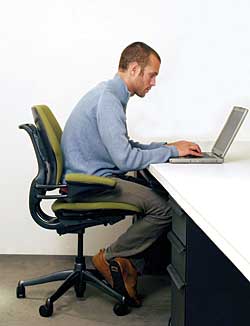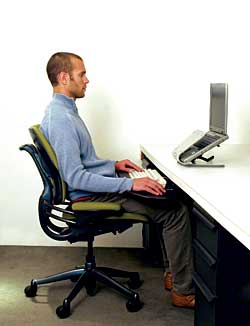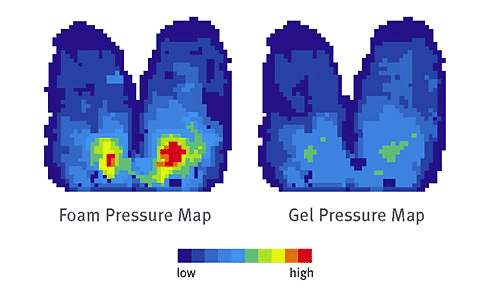Choosing an Office Chair: An Informed Decision for Comfort and Health
Why Do We Sit?
As Professor Alan Hedge, Ph.D., director, Human Factors and Ergonomics Laboratory, Cornell University, points out, sitting has become a way of life for many Americans. "We sit in cars, buses, trains or planes when we travel; we sit to eat meals; we sit and watch TV; we sit in classrooms; and, of course, we sit most of the day at work. For many activities, we could stand just as easily as sit. For example, we could stand to watch TV, and stand in front of a desk all day as in Dickens' time. We sit for very good reasons."
The first, he says, is that sitting uses about 20 percent less energy compared with standing to do the same work, so comfortable sitting helps to relieve fatigue. Another reason, he suggests, is that sitting gives us greater postural stability for performing fine manipulative tasks such as writing. And third, sitting helps to reduce the strain on the back muscles and on the intervertebral discs of the lumbar spine, providing that people sit back in a supported posture.
|
Analyzing the "Right" Position
Much of the seating literature of the 1970s and 1980s illustrated the "correct" seated position of the office worker-usually a woman typist or secretary sitting bolt upright, knees and feet together, with the angle between torso and thighs at 90 degrees. But observations of astronauts and underwater workers found evidence contrary to what was thought "correct." A recent study presented by Waseem Amir Bashir, MBChB, of the University of Alberta Hospital, Canada, at a conference of the Radiological Society of North America, reported that a 135-degree body-thigh sitting posture is a better biomechanical sitting position than a 90-degree posture, which most people consider normal. Using a new form of tissue scanning magnetic resonance imaging technology, researchers scanned volunteers who sat three different ways: slouching, or hunched forward; upright in a 90-degree position; and "relaxed," leaning back 135 degrees with feet on the floor. They found that the 90-degree position could, over time, lead to degenerative disc disease. The healthiest work position was found to be 135 degrees.
Quite simply, the more work that can be performed while reclining, the more the body's weight will be distributed to the backrest of the chair, and the less pressure the spine will have to endure.
One study by a chair manufacturer recorded office workers' postures over the course of a day. Despite the known benefits of reclined postures, the workers leaned forward for approximately half the time and reclined for less than a tenth of the time. This suggests that either the workstation was not arranged to accommodate computer work during recline-often the lack of a proper keyboard and mouse support promotes unhealthy positions-the chair did not support a reclined posture, or possibly, that reclining was not part of the culture of that particular office. Considering that a reclined posture relieves spinal and muscle stress, this data helps explain why back pain is so prevalent today.
Playing a significant part in these results, no doubt, is the fact that most chairs are not properly adjusted for the individual. In a recent study, one manufacturer found that nearly two-thirds of workers in an office made no adjustments to their chair, even though they knew they could. In another study, less than 2 percent of the subjects in a laboratory setting were able to identify the purpose of the back tension adjustment knob on a variety of chairs. When a chair isn't adjusted properly, it can create health problems, as people will adjust their bodies to fit the chair instead of the other way around.
|












